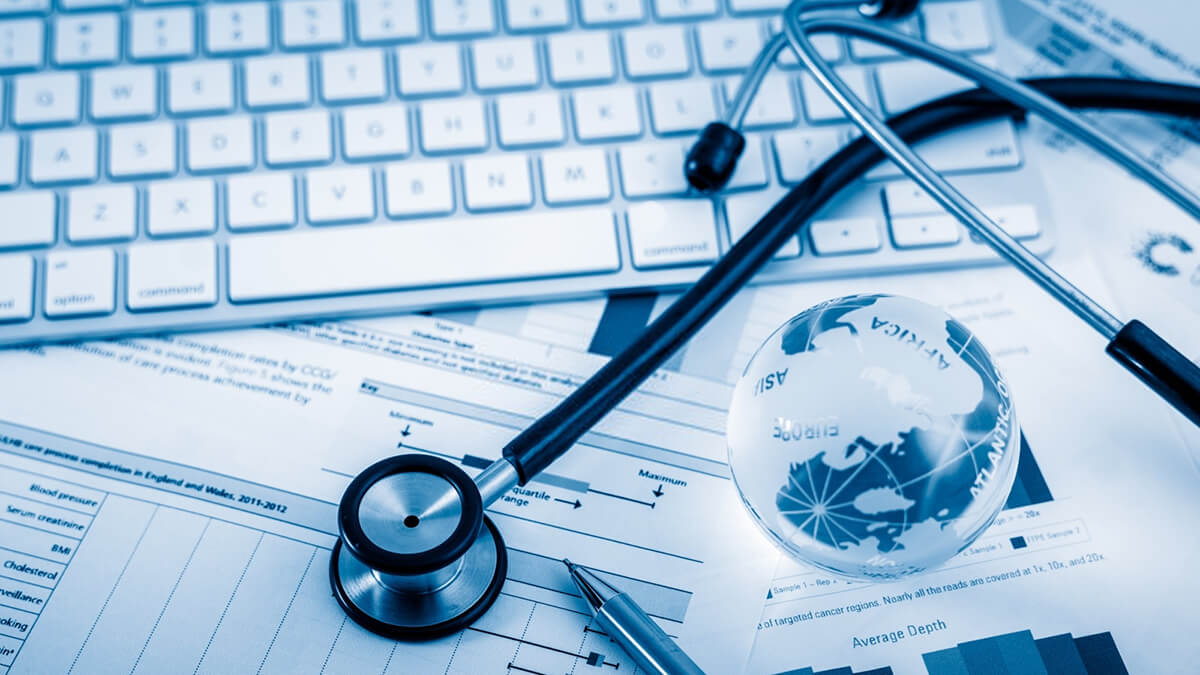Medical Administration Programs: What to Search for in a High quality Program
Medical Administration Programs: What to Search for in a High quality Program
Blog Article
Innovations in Medical Management: Exactly How Innovation Is Reshaping Medical Care Administration
The landscape of health care administration is going through a profound makeover, driven by technological developments in clinical administration. Electronic Wellness Records (EHR) have become the foundation of effective person information administration, while telemedicine bridges ranges, making healthcare easily accessible to also the most remote areas. Synthetic knowledge is not just a futuristic concept however a present-day device that individualizes patient treatment and simplifies administrative jobs. As these innovations take spotlight, an important inquiry arises: just how will these modern technologies better redefine the health care experience for both companies and patients in the coming years?
Evolution of Electronic Health Records
Over the previous few years, the development of electronic health and wellness documents (EHRs) has substantially transformed the landscape of medical administration. Created to digitize person documents, EHRs have actually expanded beyond their original range to come to be integral devices in streamlining medical care processes, boosting patient care, and boosting administrative effectiveness. The change from paper-based systems to EHRs has actually decreased redundancies, minimized errors, and assisted in smooth details sharing throughout different doctor, thus making it possible for thorough and collaborated patient care.
EHRs have actually introduced a standard shift in healthcare administration by integrating professional, administrative, and financial data, hence enabling for even more informed decision-making. The ease of access of real-time person information encourages medical care specialists to make prompt diagnostic and treatment choices, better boosting individual outcomes. EHRs support the implementation of evidence-based techniques by providing accessibility to the latest medical study and therapy standards directly within the medical operations.
The federal incentives and policies have accelerated EHR fostering, making sure compliance with standards that protect individual privacy and data safety. As the health care industry continues to embrace electronic improvement, EHRs stay at the leading edge of advancement, driving performance and boosting the general quality of medical care distribution.
Improvements in Telemedicine
Telemedicine has quickly advanced over the last few years, basically modifying the way healthcare solutions are supplied. This transformation is largely attributed to technical developments that have broadened access to medical treatment, especially for individuals in remote or underserved areas. Telemedicine platforms facilitate real-time assessments between individuals and doctor, thus reducing the need for in-person visits and substantially lowering wait times.
The assimilation of video conferencing, mobile health and wellness applications, and remote tracking gadgets has boosted the scope of telemedicine. Individuals can currently handle persistent conditions with continual monitoring, obtain prompt appointments, and gain access to professional treatment without geographical restraints. This shift has not just improved individual complete satisfaction however has actually likewise maximized health care workflows and source allowance.
Additionally, telemedicine has played a crucial role in public wellness, particularly during pandemics, by decreasing the danger of infectious condition transmission. Governing developments have actually additionally supported telemedicine's spreading, with lots of countries modifying policies to permit broader insurance policy coverage for digital sees.
Despite obstacles such as digital proficiency and data protection, the continuous development of telemedicine guarantees to maintain its trajectory as a foundation of contemporary medical care administration, supplying a much more obtainable and effective medical care shipment version.
Artificial Intelligence in Health Care
Structure on the technical innovations seen in telemedicine, man-made knowledge (AI) is rapidly becoming a transformative force in health care management. One of the most compelling applications of AI in healthcare is anticipating analytics, which allows health care managers to prepare for person demands, streamline source allocation, and improve individual results.

One more significant application is in personalized medication, where AI aids in customizing therapies to specific client accounts by examining genetic, way of life, and ecological elements (medical administration). As AI proceeds to develop, its assimilation into medical care administration assures to optimize procedures, lower expenses, and inevitably enhance the high quality of treatment provided
Enhancing Data Protection Steps
In the digital age, guarding patient info has actually become an important priority in medical administration. As health care companies increasingly depend on electronic systems for taking care of person information, the requirement for robust information safety steps has expanded exponentially. Information violations not just threaten person privacy yet additionally lead to substantial look at here now economic losses and check my blog damage to institutional reputations. The integration of sophisticated safety and security procedures is critical.
Health care organizations are executing multi-layered security frameworks to reduce threats. Encryption technologies make certain that sensitive information stays hard to reach to unauthorized customers, both during transmission and storage space. Additionally, the fostering of blockchain technology offers a promising method for improving information stability and traceability, giving an immutable document of all purchases.

Educating staff on cybersecurity finest methods is similarly necessary. Recognition programs gear up medical care employees with the expertise to identify and report possible hazards, such as phishing efforts. By prioritizing information security, medical managements can secure patient details and preserve trust.
Improving Individual Communication Equipment
While robust information safety and security actions are basic in securing patient details, equally crucial is the enhancement of individual communication systems to make sure efficient healthcare distribution. In the advancing landscape of medical care administration, technological innovations are playing a crucial duty in transforming how healthcare service providers interact with people. Efficient communication systems not just enhance client satisfaction yet likewise enhance clinical end results by guaranteeing prompt and precise information exchange.
Among the significant advancements in this location is the integration of digital health documents (EHR) with client sites. This combination allows individuals to access their clinical information safely, routine consultations, and interact with doctor successfully. Furthermore, using telemedicine systems has actually broadened access to medical care solutions, particularly for those in remote locations or with movement difficulties. These systems facilitate real-time appointments, lowering the click reference demand for physical gos to and allowing constant care management.
Moreover, artificial intelligence-powered chatbots are being increasingly used to supply instant responses to client questions, providing a smooth communication experience. By leveraging these technological advancements, doctor can cultivate even more customized client communications, eventually resulting in enhanced person engagement and adherence to treatment plans.
Conclusion
Telemedicine boosts medical care accessibility for remote populaces, while man-made knowledge automates tasks and customizes client interaction. Jointly, these advancements drive effectiveness, minimize prices, and boost the quality of healthcare distribution, improving organizational procedures in the healthcare market.
Report this page